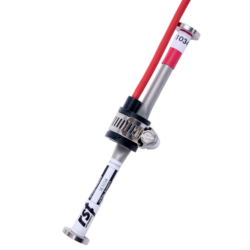Learn More about Strain Gauges and Strain Meters
When installed, Strain Gauges and Strain Meters provide ongoing monitoring of strain at key points in the structure, providing the information essential to maintaining balanced structural integrity. Strain Gauges and Strain Meters can be welded to or embedded in various structures, depending on the product and specific application. Rebars embedded in concrete, cable bolts, and steel members as well as the concrete itself, are just a few of the supporting components that must be monitored in order to protect the integrity of the overall structure.
RST’s Vibrating Wire Rebar Strain Meter, is designed to measure strain on rebar embedded in concrete and is affixed to the rebar cage itself. When mounted with the intention of measuring the concrete itself, it is also referred to as a Sister Bar. These gauges are commonly used in concrete piles, diaphragm walls, and concrete foundation slabs.
The Vibrating Wire Strain Gauge is available in three different models suited to different modes of installation—two for use on steel structures (Arc Weldable Gauges and Spot Weld Gauges), and one designed to be embedded in concrete (Embedment).
All Vibrating Wire Strain Gauges can be monitored either manually using a RST VW2106 Vibrating Wire Readout or for a fully automated system, used together with an RSTAR Affinity Datalogger and RSTAR Affinity Gateway for remote access to the data.









